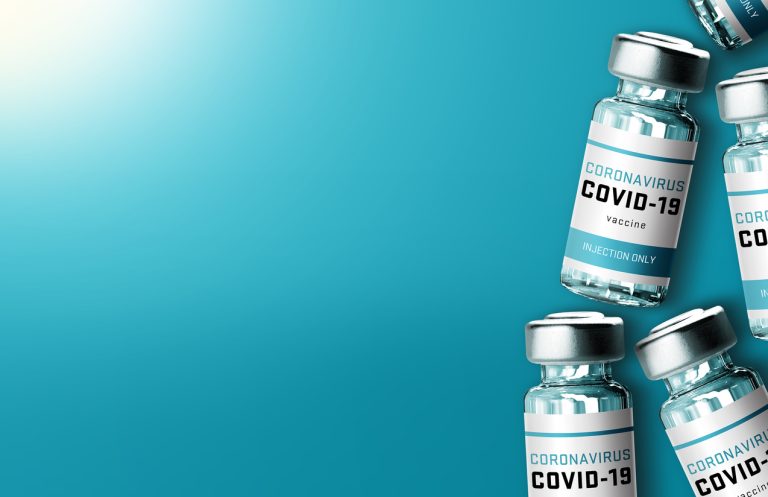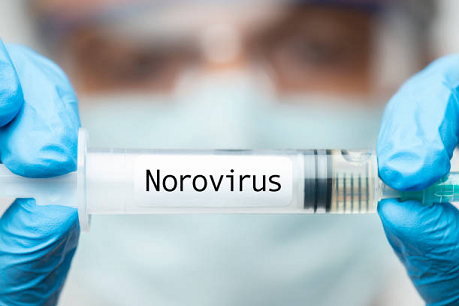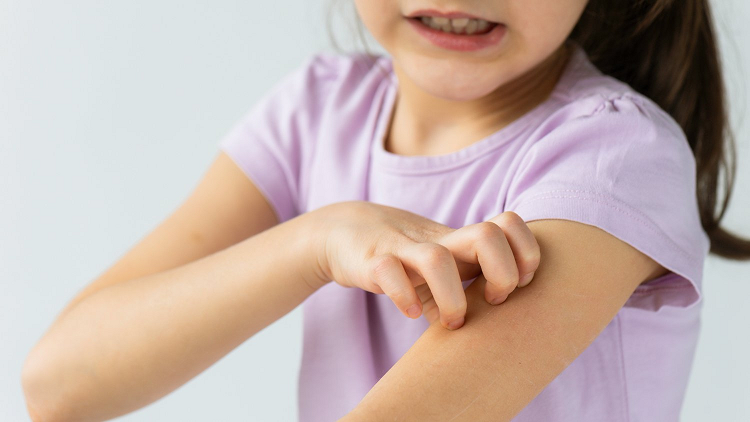On Nov. 26, 2020, when I raised questions1 about the results of Pfizer’s and Moderna’s COVID-19 vaccine trials, all that was in the public domain were the study protocols2 and a few press releases.3 Now, two journal publications4 and around 400 pages of summary data are available in the form of multiple reports presented by and to the U.S. Food and Drug Administration (FDA)5 prior to the agency’s emergency authorization of each company’s mRNA vaccine. While some of the additional details are reassuring, some are not. Here I outline new concerns about the trustworthiness and meaningfulness of the reported efficacy results.
“Suspected COVID-19”
All attention has focused on the dramatic efficacy results: Pfizer reported 170 PCR confirmed COVID-19 cases, split eight to 162 between vaccine and placebo groups. But these numbers were dwarfed by a category of disease called “suspected COVID-19”—those with symptomatic COVID-19 that were not PCR confirmed. According to FDA’s report on Pfizer’s vaccine,6 there were “3410 total cases of suspected, but unconfirmed COVID-19 in the overall study population, 1594 occurred in the vaccine group vs. 1816 in the placebo group.”
With 20 times more suspected than confirmed cases, this category of disease cannot be ignored simply because there was no positive PCR test result. Indeed this makes it all the more urgent to understand. A rough estimate of vaccine efficacy against developing COVID-19 symptoms, with or without a positive PCR test result, would be a relative risk reduction of 19 percent (see footnote)—far below the 50 percent effectiveness threshold for authorization set by regulators. Even after removing cases occurring within seven days of vaccination (409 on Pfizer’s vaccine vs. 287 on placebo), which should include the majority of symptoms due to short-term vaccine reactogenicity, vaccine efficacy remains low: 29 percent (see footnote).
If many or most of these suspected cases were in people who had a false negative PCR test result, this would dramatically decrease vaccine efficacy. But considering that influenza-like illnesses have always had myriad causes—rhinoviruses, influenza viruses, other coronaviruses, adenoviruses, respiratory syncytial virus, etc.—some or many of the suspected covid-19 cases may be due to a different causative agent.
But why should etiology matter? If those experiencing “suspected COVID-19” had essentially the same clinical course as confirmed COVID-19, then “suspected plus confirmed COVID-19” may be a more clinically meaningful endpoint than just confirmed COVID-19.
However, if confirmed COVID-19 is on average more severe than suspected COVID-19, we must still keep in mind that at the end of the day, it is not average clinical severity that matters, it’s the incidence of severe disease that affects hospital admissions. With 20 times more suspected COVID-19 than confirmed COVID-19, and trials not designed to assess whether the vaccines can interrupt viral transmission, an analysis of severe disease irrespective of etiologic agent—namely, rates of hospitalizations, ICU cases, and deaths amongst trial participants—seems warranted, and is the only way to assess the vaccines’ real ability to take the edge off the pandemic.
There is a clear need for data to answer these questions, but Pfizer’s 92-page report didn’t mention the 3410 “suspected COVID-19” cases. Nor did its publication in The New England Journal of Medicine.7 Nor did any of the reports on Moderna’s vaccine. The only source that appears to have reported it is FDA’s review of Pfizer’s vaccine.
The 371 Individuals Excluded from Pfizer Vaccine Efficacy Analysis
Another reason we need more data is to analyze an unexplained detail found in a table of FDA’s review5of Pfizer’s vaccine: 371 individuals excluded from the efficacy analysis for “important protocol deviations on or prior to seven days after Dose 2.” What is concerning is the imbalance between randomized groups in the number of these excluded individuals: 311 from the vaccine group vs 60 on placebo. (In contrast, in Moderna’s trial8 there were just 36 participants excluded from the efficacy analysis for “major protocol deviation”—12 vaccine group vs 24 placebo group.)
What were these protocol deviations in Pfizer’s study, and why were there five times more participants excluded in the vaccine group? The FDA report5 doesn’t say, and these exclusions are difficult to even spot in Pfizer’s report9 and journal publication.7
Fever and Pain Medications, Unblinding and Primary Event Adjudication Committees
In November,1 I expressed concern about the potential confounding role of pain and fever medications to treat symptoms. I posited that such drugs could mask symptoms, leading to underdetection of COVID-19 cases, possibly in greater numbers in people who received the vaccine in an effort to prevent or treat adverse events. However, it seems their potential to confound results was fairly limited: although the results indicate that these medicines were taken around three to four times more often in vaccine versus placebo recipients (at least for Pfizer’s vaccine—Moderna did not report as clearly), their use was presumably concentrated in the first week after vaccine use, taken to relieve post-injection local and systemic adverse events. But the cumulative incidence curves suggest a fairly constant rate of confirmed COVID-19 cases over time, with symptom onset dates extending well beyond a week after dosing.
That said, the higher rate of medication use in the vaccine arm provides further reason to worry about unofficial unblinding. Given the vaccines’ reactogenicity, it’s hard to imagine participants and investigators could not make educated guesses about which group they were in. The primary endpoint in the trials is relatively subjective making unblinding an important concern. Yet neither FDA nor the companies seem to have formally probed the reliability of the blinding procedure, and its effects on the reported outcomes.
Nor do we know enough about the processes of the primary event adjudication committees that counted COVID-19 cases. Were they blinded to antibody data and information on patients’ symptoms in the first week after vaccination? What criteria did they employ, and why, with a primary event consisting of a patient-reported outcome (COVID-19 symptoms) and PCR test result, was such a committee even necessary? It’s also important to understand who was on these committees. While Moderna has named its four-member adjudication committee—all university-affiliated physicians—Pfizer’s protocol says three Pfizer employees did the work. Yes, Pfizer staff members.
Vaccine Efficacy in People Who Already Had COVID-19?
Individuals with a known history of SARS-CoV-2 infection or previous diagnosis of COVID-19 were excluded from Moderna’s and Pfizer’s trials. But still 1125 (3.0 percent) and 675 (2.2 percent) of participants in Pfizer’s and Moderna’s trials, respectively, were deemed to be positive for SARS-CoV-2 at baseline.
Vaccine safety and efficacy in these recipients has not received much attention, but as increasingly large portions of many countries’ populations may be “post-COVID,” these data seem important—and all the more so as the U.S. CDC recommends10 offering vaccine “regardless of history of prior symptomatic or asymptomatic SARS-CoV-2 infection.” This follows on from the agency’s conclusions,11 regarding Pfizer’s vaccine, that it had ≥92 percent efficacy and “no specific safety concerns” in people with previous SARS-CoV-2 infection.
By my count, Pfizer apparently reported eight cases of confirmed, symptomatic COVID-19 in people positive for SARS-CoV-2 at baseline (one in the vaccine group, seven in the placebo group, using the differences between Tables 9 and 10) and Moderna, one case (placebo group; Table 12).
But with only around four to 31 reinfections documented globally, how, in trials of tens of thousands, with median follow-up of two months, could there be nine confirmed COVID-19 cases among those with SARS-CoV-2 infection at baseline? Is this representative of meaningful vaccine efficacy, as CDC seems to have endorsed? Or could it be something else, like prevention of COVID-19 symptoms, possibly by the vaccine or by the use of medicines which suppress symptoms, and nothing to do with reinfection?
We Need the Raw Data
Addressing the many open questions about these trials requires access to the raw trial data. But no company seems to have shared data with any third party at this point.
Pfizer says it is making data available “upon request, and subject to review.” This stops far short of making data publicly available, but at least leaves the door open. How open is unclear, since the study protocol says Pfizer will only start making data available 24 months after study completion.
Moderna’s data sharing statement states data “may be available upon request once the trial is complete.” This translates to sometime in mid-to-late 2022, as follow-up is planned for two years.
Things may be no different for the Oxford/AstraZeneca vaccine which has pledged patient-level data “when the trial is complete.” And the ClinicalTrials.gov entry for the Russian Sputnik V vaccine says there are no plans to share individual participant data.
The European Medicines Agency and Health Canada, however, may share data for any authorized vaccines much earlier. EMA has already pledged to publish the data submitted by Pfizer on its website “in due course,” as has Health Canada.
Originally published by The BMJ Jan. 4, 2021, written by Peter Doshi, reproduced here under the terms of the CC BY NC licence.
Click here to view References:1 Doshi P. Pfizer and Moderna’s “95% effective” vaccines—let’s be cautious and first see the full data. The BMJ Opinion Nov. 26, 2020.
2 RIAT. Covid-19 vaccine trials protocols and other study documents. Jan. 5, 2021.
3 Press release. Moderna’s COVID-19 Vaccine Candidate Meets its Primary Efficacy Endpoint in the First Interim Analysis of the Phase 3 COVE Study. Moderna Nov. 16, 2020.
4 Baden LR, et al. Efficacy and Safety of the mRNA-1273 SARS-CoV-2 Vaccine. The New England Journal of Medicine Dec. 30, 2020.
5 Pfizer and BioNTech. Pfizer-BioNTech COVID-19 Vaccine. Vaccines and Related Biological Products Advisory Committee Meeting, Dec. 10, 2020.
6 FDA. Pfizer-BioNTech COVID-19 Vaccine. VRBPAC Briefing Document.
7 Polack FP, et al. Safety and Efficacy of the BNT162b2 mRNA Covid-19 Vaccine. The New England Journal of Medicine Dec. 31, 2020.
8 Moderna. Moderna COVID-19 Vaccine. Vaccines and Related Biological Products Advisory Committee Meeting, Dec. 17, 2020.
9 Pfizer. Pfizer-BioNTech COVID-19 Vaccine (BNT162, PF-07302048). Vaccines and Related Biological Products Advisory Committee, Dec. 10, 2020.
10 U.S. Centers for Disease Control and Prevention. Interim Clinical Considerations for Use of mRNA COVID-19 Vaccines Currently Authorized in the United States.
11 CDC. The Advisory Committee on Immunization Practices’ Interim Recommendation for Use of Pfizer-BioNTech COVID-19 Vaccine — United States, December 2020. MMWR Dec. 18, 2020.













7 Responses
Thank you for sharing this information, it is important to understand these numbers. I question one part of the math though. If there are 25 million reported cases in the USA but really there are 20x more cases, that would mean 500 million Americans have had the virus (which is not possible with there only being 330 million of us!).
How do you even make a vaccine for a virus that’s never been isolated?
Exactly! The vaccine industry is shooting blind, kind of like wishing upon a star but which one?
They tell you not to worry but they’re not held to account if someone is injured or dies since Congress exempted the vaccine industry in 1986 under the National Childhood Vaccine Injury Act (NCVIA). Never fear, if something happens the ‘taxpayer’ funded injury compensation program ‘might’ consider your claims.
With that they tell you to take your medicine, get your shot and don’t forget to put a mask on to further our unscientific means of controlling the populace.
That we need more details and raw data is the understatement of the last 100 years. This should have been done over a 3-5 year period under the scrutiny of a none-affiliated commission overseeing the drug trials. We should not be forced into a supremely questionable new drug trial that is ongoing indefinitely using billions of test subjects. Do I trust the data from any of these drug companies? NO! Even if it is certified by the FDA, WHO or the CDC or any of their paid for medical experts. If Dr. Doshi was to review factual and truthful data from these companies, I might rethink my opinions.
Thank you for NOT jumping to conclusions like the rest !!!!!! .
Ok and now a new report is surfacing that antibodies do not mean anything and that you could have had CoVid 19 and not have antibodies and continue having reinfections. So they are discouraging antibody tests as proof of immunity. So the problem is the effect where a person with the virus that keeps re-appearing and then gets the vaccine, or the person with certain underlying biology that is being ignored-autoinflammatory syndrome types, autoimmune types, different autophagy types, and the person who is older is being ignored who has a different immune system due to age, and the person who has many or multipe conditions, the people with allergies, the people with a high allostatic load of toxins that are persistent in there bodies that is offsetting there immune system, and when they get the next thing …..the body just shuts down. But meanwhile the propaganda machine downplays everything and the propaganda machine funds laws………
Thank you Dr. Doshi ! I am always amazed by the lack of critical thinking/ investigation when it comes to vaccines. How critical data/ information is just “ squashed.” And in the case of Covid there are proven, effective treatments. I hope everyone will look at Dr. Pierre Kory’s information on Ivermectin. He is double board cert. pulmonologist/ critical care, and part of FLCCC Alliance. Also, Harvey Risch, MD, Ph.D. ( Yale School of Public Health ) details the importance/ effectiveness of hydroxchloroquine.
Early on I found the published research ( Vincent et al. Chloroquine is a potent inhibitor of SARS coronavirus infection and spread. Virology Journal 2005;2:69. )
that demonstrated that chloroquine stopped the virus’s replication in living cell cultures. There was another publication in 2010 – PLOS Pathogens – by te Velthuis et al. Zinc 2+ inhibits coronavirus and arterivirus RNA polymerase activity In Vitro and zinc ionophores block the replication of these viruses in cell cultures.
SO, NIH, CDC, FDA, Fauci ALL knew that early hydroxchloroquine data from other countries was very most likely true ! YET, they demonized the drug and all who said it was curing patients if given early. They only did a few studies that were designed to fail ! THIS was A CRIME AGAINST HUMANITY.